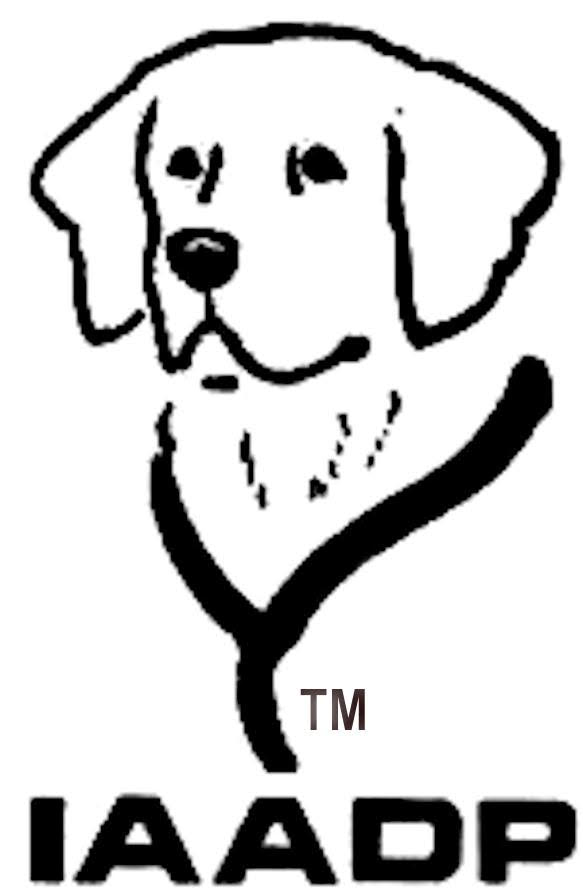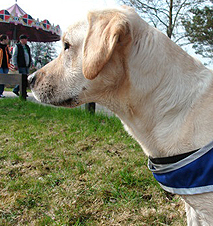A FASD assistance dog is a specially trained dog, who accompanies children heavily restricted due to fetal alcohol syndrome. It is more than a therapy dog, which only encourages development through its presence and friendship. A FASD assistance dog takes on the responsibilities of a therapy dog and an assistance dog at the same time.
As several symptoms and behavioral patterns are similar to autism, FASD assistance dogs are trained in a similar manner to autism assistance dogs. Both have a special position among assistance dogs. Normally, an assistance dog works with only for one person, the person with the disability.
Assistance dogs - person with the disability
While a child in a wheelchair is the main caregiver for their dog and has to give the assistance dog commands, such as "bring pen" or "light", autism assistance dogs and FAS assistance dogs have more than one caregiver. A FASD assistance dog is part of a group of three:
Mother/ father - child with FAS - FAS assistance dog
With a FASD assistance dog, the parents play a significant role. They take complete responsibility for the dog and the dog itself develops a connection with all the family members, and helps the parents as well as the autistic child. A FASD assistance dog improves the life of the whole family. As no FAS sufferer suffers from exactly the same symptoms, each FASD assistance dog is trained individually to meet the needs of the child. First a FASD assistance dog first goes through basic training and learns the proper behavior and standards for an assistance dog. After roughly a year, training begins for the tasks that will be helpful for the individual FASD assistance dog.
- Tasks of a FASD assistance dog
Many children with FASD have difficulties processing stimuli, leading to stereotypical or unmeasured behavior. The dog learns these signals in training, in order to interrupt the behavior by prodding or laying a paw on the child. Many children find it helpful for the dog to lay on their legs and calm them when they are overwhelmed by stimuli.
When the child becomes hyper and has difficulties staying calm or sitting, the assistance dog can calm them down.
A FASD assistance dog can also improve the child's safety. The dog learns to stop at every crossing, and to only cross the road on command, when there are no cars or bikes approaching. This especially helps keep children, who don't notice dangers in road, more secure. In order to guarantee security in public places, the child can be attached to the dog by leash, as also happens with autism assistance dogs.
- A FASD assistance dog takes on the responsibilities of a therapy dog and an assistance dog at the same time
Children who have FASD often have problems allowing people to get close and building trust. A FAS assistance dog can be a permanent point of contact for the child. The dog functions as a constant, calming pole in a world which the child finds confusing. When unexpected situations occur, the assistance dog helps the child to navigate them better with constant calming behavior.
Through its presence the dog can also help the child to make connections, develop contacts, and take on responsibility. This leads to increased self-confidence on the part of the child. Through interaction with the dog, the child's speech, self-reflection and self-awareness increases.
- Preconditions for having a FASD assistance dog
- You child should like dogs and enjoy being around them. Your child should also not be scared of dogs and want to spend several hours, not just a few minutes, in the proximity of dogs on their own initiave.
- Your child should be restricted enough that your practicing physician has diagnosed them with a severe disability, and their day-to-day life is limited.









